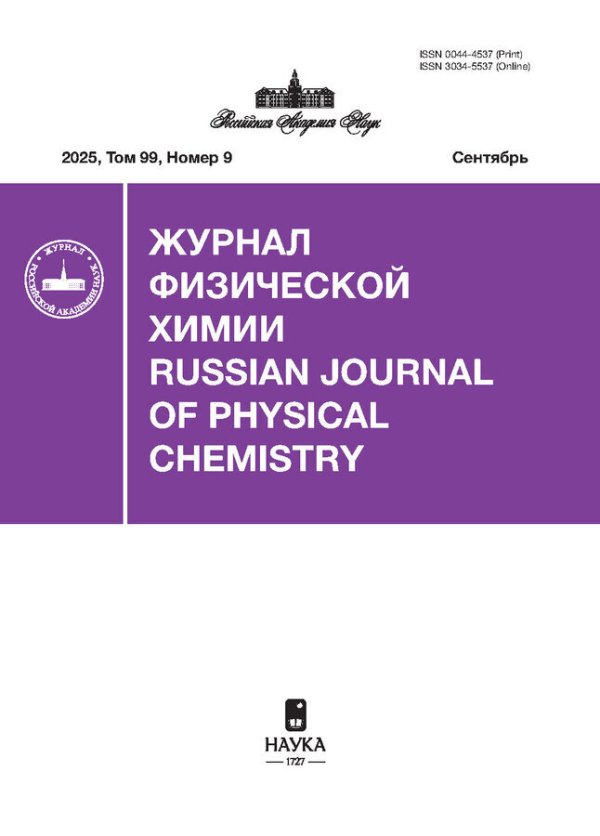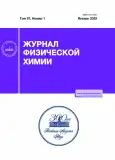Structure and Properties of Composite Materials Sintered at High Pressure and Reinforced with Amorphous Boron Particles
- Authors: Lukina I.N.1, Chernogorova O.P.1, Drozdova E.I.1, Ekimov E.A.2
-
Affiliations:
- Baikov Institute of Metallurgy and Materials Science, Russian Academy of Sciences
- Vereshchagin Institute of High Pressure Physics, Russian Academy of Sciences
- Issue: Vol 97, No 1 (2023)
- Pages: 21-25
- Section: ПАМЯТИ Н.А. БУЛЬЕНКОВА
- Submitted: 15.10.2023
- Published: 01.01.2023
- URL: https://journals.rcsi.science/0044-4537/article/view/136510
- DOI: https://doi.org/10.31857/S0044453723010193
- EDN: https://elibrary.ru/BCKIXS
- ID: 136510
Cite item
Full Text
Abstract
Metal matrix composite materials (CMs) reinforced with boron particles are synthesized from powders of amorphous boron and metal (Ni, Ti) at a pressure of 8 GPa and temperatures of 500–1000°C. It is established that amorphous boron crystallizes during synthesis at temperatures above 800°С. Amorphous boron particles are characterized by a hardness of ~30 GPa, an indentation modulus of elasticity of up to 270 GPa, and an elastic recovery of more than 60%. The patterns of boride formation during high-pressure synthesis are studied. It is shown that the wear resistance of a Ni–B CM synthesized at 600°С grows by more than 30 times, relative to the wear resistance of pure nickel. Reinforcing titanium with 30% amorphous boron increases wear resistance by more than two orders of magnitude, but the coefficient of friction of CMs is reduced slightly.
About the authors
I. N. Lukina
Baikov Institute of Metallurgy and Materials Science, Russian Academy of Sciences
Email: tchern@imet.ac.ru
119334, Moscow, Russia
O. P. Chernogorova
Baikov Institute of Metallurgy and Materials Science, Russian Academy of Sciences
Email: tchern@imet.ac.ru
119334, Moscow, Russia
E. I. Drozdova
Baikov Institute of Metallurgy and Materials Science, Russian Academy of Sciences
Email: tchern@imet.ac.ru
119334, Moscow, Russia
E. A. Ekimov
Vereshchagin Institute of High Pressure Physics, Russian Academy of Sciences
Author for correspondence.
Email: tchern@imet.ac.ru
142190, Moscow, Russia
References
- Shah F.U., Glavatskih S., Antzutkin O.N. // Tribol. Lett. 2013. V. 51. № 3. P. 281. https://doi.org/10.1007/s11249-013-0181-3
- German R.M., Mar R.W., Hastings J.C. // Ceram. Bull. 1975. V. 54. № 2. P. 178.
- Kalanadze G.I., Shalamberidze S.O., Peikrishvili A.B. // J. Solid State Chem. 2000. V. 154. P. 194. https://doi.org/10.1006/jssc.2000.8835
- Brodhag C., Thevenot F. // J. Less-Common Met. 1986. V. 117. P. 175. https://doi.org/10.1006/jssc.2000.8835
- Екимов Е.А., Садыков Р.А., Громницкая Е.Л. и др. // Неорган. матер. 2006. Т. 42. № 5. С. 538.
- Ekimov E.A., Sidorov V.A., Sadykov R.A. et al. // High Pressure Res. 2007. V. 27. P. 179. https://doi.org/10.1080/08957950601101902
- Chernogorova O., Drozdova E., Ovchinnikova I. et al. // J. Appl. Phys. 2012. V. 111. P. 112601. https://doi.org/10.1063/1.4726155
- Черногорова О.П., Дроздова Е.И., Блинов В.М., Бульенков Н.А. // Росс. нанотехнол. 2008. № 5–6. С. 150.
- Talley C.P. // J. Appl. Phys. 1959. V. 30. № 7. P. 1114.
- Bhardwaj J., Krawitz A. // J. Mater. Sci. 1983. V. 18. P. 2639.
- Диаграммы состояния двойных металлических систем: справочник в 3-х т. / Под ред. Н.П. Лякишева. М.: Машиностроение, 1996.
- Leyland A., Matthews A. // Surf. Coat. Technol. 2004. V. 177–178. P. 317. https://doi.org/10.1016/j.surfcoat.2003.09.011
Supplementary files














